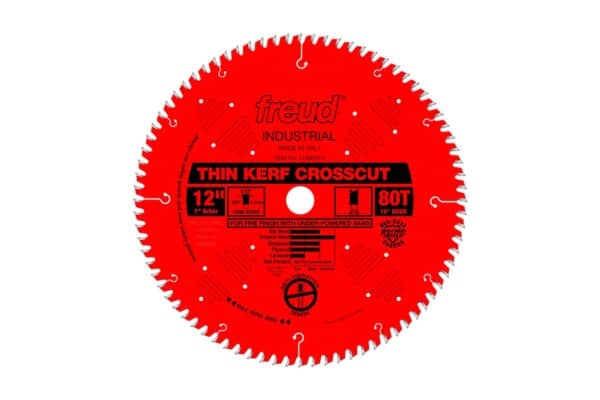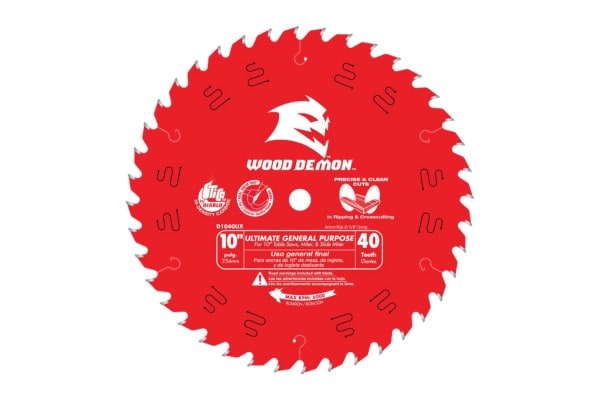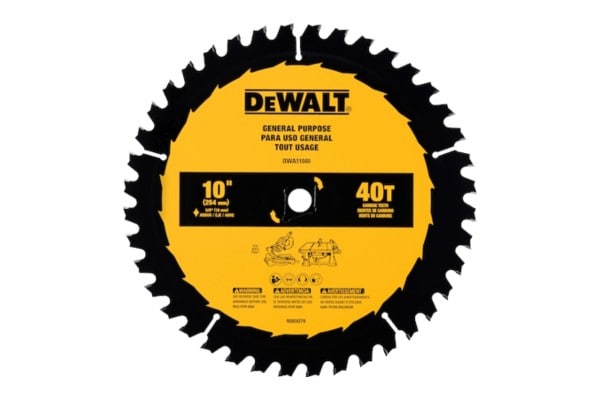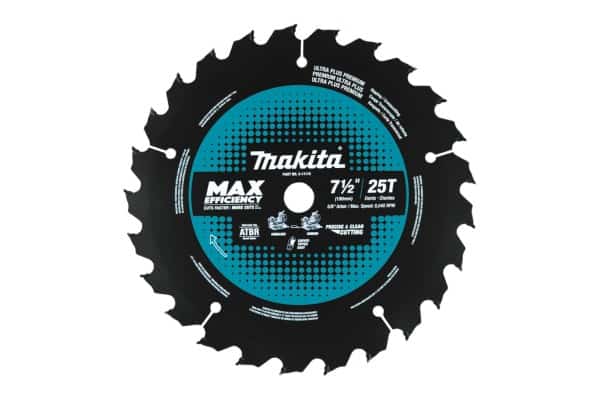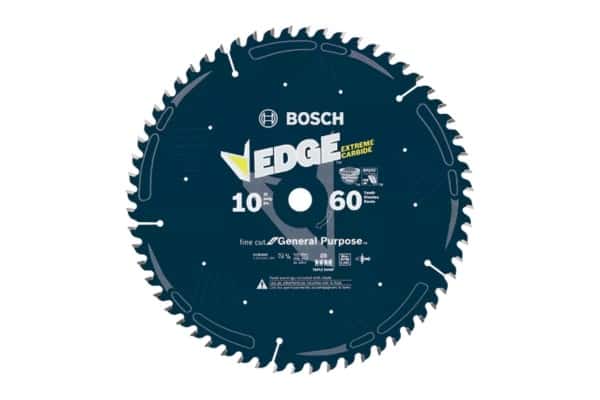Finding the right circular saw blade is a game-changer for any professional or DIY enthusiast. In 2025, several manufacturers in the USA stand out for their exceptional quality, precision, and durability. But how do you choose the best one? Let’s explore the top players in the market today!
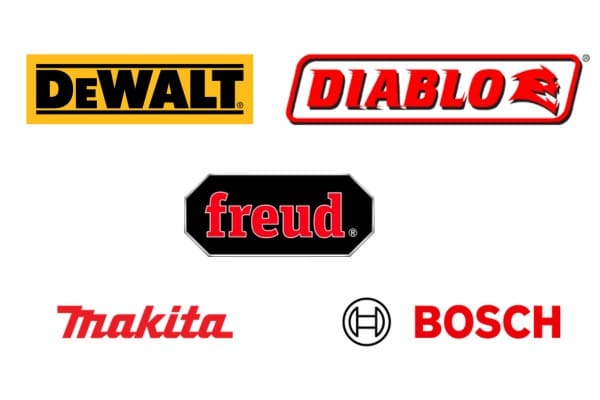
When selecting the best circular saw blade, it’s important to consider the material you’ll be cutting, the quality of the blade, and the manufacturer’s reputation. A good blade can make all the difference in the quality of your cuts, and the right manufacturer ensures reliability and longevity.
Ready to dive into the specifics? Let’s break down the best manufacturers and the best blades for various jobs.
What is the Best Blade to Cut Wood?
Choosing the right blade for wood isn’t as simple as picking the sharpest one off the shelf. There are a few factors to keep in mind, like tooth count and material composition1, that can make a big difference in performance.
For cutting wood, a blade with fewer teeth (24 to 40 teeth) is generally best. This allows for faster cutting and better chip removal. Look for blades from manufacturers known for durability, like Freud and Diablo.
When it comes to cutting wood, the right saw blade can drastically improve your workflow and the quality of your cuts. So, what should you look for in the perfect wood-cutting blade?
Tooth Count and Material
Woodcutting blades typically have fewer teeth (between 24 to 40), which allows for faster cuts. This is especially important for rough cuts. If you’re looking to make smoother cuts, a blade with more teeth (60+), such as a crosscut blade, is ideal.
Freud and Diablo are two manufacturers consistently praised for their wood-cutting blades. Freud, for instance, offers carbide-tipped blades that cut through wood like butter, while Diablo is known for blades that stay sharper longer, reducing the need for frequent replacements.
Durability and Versatility
A blade that can handle multiple types of wood without dulling quickly is crucial for professionals. This is why blades from manufacturers like DeWalt y makita are often recommended—they’re built to last and versatile enough to handle both softwoods and hardwoods.
In my experience, a blade with a tungsten carbide tip offers longer-lasting sharpness. It’s an investment that pays off in smoother cuts and less downtime spent replacing blades.
Which Saw Blades Make the Smoothest Cut?
When you need precision and a smooth finish, you need a blade that excels at crosscuts and fine woodworking. So, which brands and blades deliver the smoothest results?
For the smoothest cuts, look for blades with a high tooth count (60+ teeth). Brands like Freud, Bosch, and Makita have fantastic options designed for clean cuts in wood, MDF, and plywood.
Smooth cuts are often the result of choosing the right blade, but how can you know which one is best for your specific project? Let’s dive deeper.
Blade Design for Smooth Cuts
Blades with more teeth are perfect for achieving a fine, smooth cut because they leave less space between each tooth. As a result, there’s less room for the wood2 to splinter.
Freud’s Fine Finishing Blades y Bosch’s Precision Blades are among the top contenders here. These blades are designed with micro-grain carbide tips, reducing the chances of splinters while providing a sleek, smooth finish on even the most delicate materials.
Consider the Material
For MDF, plywood, or laminates, blades like Diablo’s Finishing Blades excel due to their thin kerf design, making them ideal for getting that perfect, smooth finish without excessive effort.
From my experience, a thin-kerf blade—meaning a blade with a narrower body—can also prevent over-cutting, helping to maintain precision in all your cuts.
What is the Best Saw Blade to Prevent Tearout?
Tearout is one of the biggest frustrations when cutting wood or other soft materials. How do you prevent it and get the perfect cut every time?
To prevent tearout, choose a blade designed for clean cuts, such as those with a high tooth count or anti-vibration features. Brands like Freud, Bosch, and DeWalt offer excellent options.
Preventing tearout requires more than just a sharp blade. It’s about precision, material compatibility3, and cutting technique. Let’s break it down.
Anti-Vibration and Special Coatings
Blades with anti-vibration technology (like Bosch’s blades) can greatly reduce the risk of tearout by minimizing movement during cutting. Additionally, Freud’s perma-shield coating helps prevent friction and build-up, giving you a cleaner, smoother cut.
Material-Specific Solutions
For cutting veneered wood or laminate, a triple-chip tooth design (often found in blades from DeWalt or Diablo) works wonders. This design reduces the chances of chip-out on both sides of the material, ensuring you get the cleanest edge possible.
In my experience, using a zero-clearance insert in your saw, combined with a blade designed for tearout prevention, can make a massive difference. It’s like setting yourself up for success before you even start cutting.
How Long Do Circular Saw Blades Last?
One of the most common questions I get from both DIYers and pros is: “How long will my blade last?” The answer isn’t simple, but there are a few key factors to consider.
The lifespan of a circular saw blade depends on usage, material being cut, and blade maintenance. Regular use in hardwood will wear blades faster than occasional use on softwoods. On average, a quality saw blade should last for 1 to 3 years.
Taking good care of your saw blade can extend its life, but how do you keep your blades sharp and ready for action? Let’s dive into maintenance.
Proper Storage and Maintenance
To maximize the lifespan of your circular saw blade, make sure to clean it after each use, remove any debris, and store it4 in a dry, cool place. Regular maintenance like sharpening your blade can also make a big difference.
Diablo y makita both have excellent customer feedback about their blades maintaining sharpness longer, especially when properly cared for. Plus, many brands offer resharpening services, which can be a cost-effective way to extend blade life.
Usage Considerations
If you’re cutting dense materials regularly, it might be a good idea to replace your blade more often. Using a blade that’s too dull can result in poor cuts and excess strain on your saw, making your projects take longer.
Conclusión
Choosing the best circular saw blade involves balancing cost, quality, and the specific needs of your projects. By selecting a blade from reputable manufacturers like Freud, Diablo, or Makita, and considering factors like tooth count and material type, you’ll be set for success in 2025 and beyond.
-
Material composition affects the durability and cutting ability of the blade. ↩
-
Explaining the best blade types for wood cutting can provide practical advice on preventing splinters. ↩
-
Material compatibility impacts the cutting process and how different materials respond to blades, making this link essential for understanding the role of material choice in preventing tearout. ↩
-
Proper storage of saw blades is essential for maintaining their longevity. Use protective cases and avoid damp environments to prevent rust. ↩
